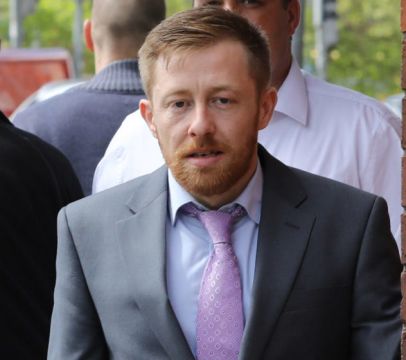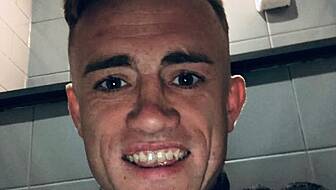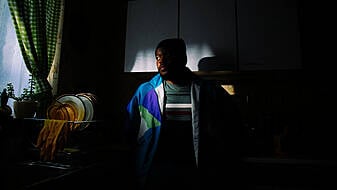The trial of a man accused of murder and two counts of attempted murder after a shooting at Bray Boxing Club will hear that a van allegedly used in the attack was found "not a million miles away" from the accused's family home.
Gerard Cervi (34), from the East Wall area in Dublin 3 has pleaded not guilty to murdering Bobby Messett (50) at the club in Bray Harbour, Bray, Co Wicklow on June 5th, 2018. He also denies the attempted murder of boxing coach Peter Taylor and Ian Britton on the same date and location.
Resuming his opening address to the jury on Wednesday, prosecuting counsel Paul Murray SC said he had given "a snapshot" of the case on Tuesday and he now wanted to go into a little bit more detail as to what they can expect to hear during the eight-week trial.
He said that murder cases come "in all shapes and sizes" and one can have a situation where an accused is "caught red-handed" at the scene. "This is not that sort of case," he added.
Another type of case, Mr Murray said, is where someone says they know an accused to see, and see him go into a boxing club to carry out a shooting. Counsel called this case "a recognition type shooting", which again he said was "not this type of case".
The prosecution barrister said that this was a "circumstantial evidence case", where one piece of evidence in itself does not prove the guilt of a particular person but when all the pieces are added together, or weighed, then it clearly leads to the inevitable guilt of the accused man. "That is so in the present case, and when one hears all the evidence you can be sure of the guilt of Mr Cervi," he stressed.
The shooting occurred just before 7am on June 5th at Bray Boxing Club, Mr Murray said and the jury would hear that a witness saw a man leaving the premises at Bray Harbour that morning.
Vehicle
"They heard the engine of a vehicle revving and a white or silver van sped past it at the harbour area. It had a yellow registration plate, so it was a UK or Northern Irish car, and she recalled the registration number to be DTF or DZ," he outlined.
Mr Murray said the evidence will be that a resident in Cabinteely saw what the prosecution contend is the very same van in a cul-de-sac in or around the Cornelscourt area shortly after 7am that day. "She took the registration plate down, it was a van, DFZ 9341," he said.
At this time, gardaí were looking for the particular vehicle which had left Bray Harbour that morning, he continued.
During the day, Mr Murray said a resident from Pigeon House Road in Ringsend contacted gardaí after he got home from work at 1.30pm to report a vehicle parked on the street.
"That was vehicle DFZ, a silver metallic Volkswagen van with a number of distinguishing features with sliding doors and a long wheelbase," he said.
At that point in time, Mr Murray said, gardaí had "a starting point" for the van at Bray Harbour, a "midpoint" for the van at Cabinteely and an "end point" for the van at Pigeon House.
"We also have a witness who saw the van there [at Pigeon House Road] at 8.15am in the morning and a man with a bicycle," he said.
"Armed with that information that there was a man with a bicycle at the van, the garda investigation continued. You will hear evidence in relation to that," he said.
Family home
In relation to the evidence against the accused, Mr Murray said it is the prosecution's case that the man with the bicycle is Mr Cervi and a connection can be made between the man with the bicycle and Russell Avenue East, which he said was the family home of the accused.
The lawyer said Russell Avenue is not "a million miles away" from where the vehicle was found at 1.30pm on June 5th.
Mr Murray said he would refer to the location of the vehicle on Pigeon House Road, location number three, as "the final position".
The court will also hear evidence, the barrister said, in relation to the vehicle having been moved to that area of Pigeon House Road in early May 2018, where it stayed in "a particular position".
"It stayed in a particular position, nearer the toll booths until May 29th, when it was moved to location number two, where it was driven on the morning of June 5th before coming back later that morning," he explained.
In relation to the movement of the vehicle on May 29th, Mr Murray said there was another vehicle, a grey Volkswagen Polo which had two very distinctive features. "Something had happened to the right wing mirror of the vehicle and there was black tape on it and a hubcap was missing on the front passenger wheel," he said.
He added that "a link" can also be made between Mr Cervi and the Volkswagen Polo which featured on May 29th, but also on other occasions.
"If you are satisfied beyond a reasonable doubt that the man on the bike was Mr Cervi, that in itself clearly proves nothing, certainly it doesn't prove a murder in Bray earlier that morning," he remarked.
He continued: "If you add that and are satisfied beyond reasonable doubt that he had alighted from the van when he was spotted then that's another piece of evidence".
Puzzle pieces
Mr Murray said it is not "just a case of a man on a bicycle" and also in a van. He explained that if one adds all the pieces together, the prosecution say that not only was Mr Cervi the man on the bike, not only was he the man in the van, but that he was also the man who entered Bray Boxing Club just before 7am that morning and carried out the shooting.
"You will be hearing evidence in support of those matters," he concluded.
At the beginning of his opening speech yesterday, Mr Murray said that a "lone gunman" had walked into Bray Boxing Club before 7am on June 5th and fired nine shots from a semi-automatic pistol "in quick succession" in "varying directions" in the confined place, leaving one man dead and two other men injured.
Mr Messett and Mr Britton were participants in the class of 11 participants and Mr Taylor was the organiser of the class.
The court heard that Mr Messett was fatally shot in the head and Mr Taylor and Mr Britton were shot in the bodies but survived.
It is the State's case that Mr Cervi was the gunman and that he intended to commit murder that day, said Mr Murray. He also pointed out in his opening speech that if a person makes a mistake, or kills the wrong person, it is still murder if there was intent to kill.
The trial continues on Wednesday afternoon before Mr Justice Michael White and a jury of three men and nine women







